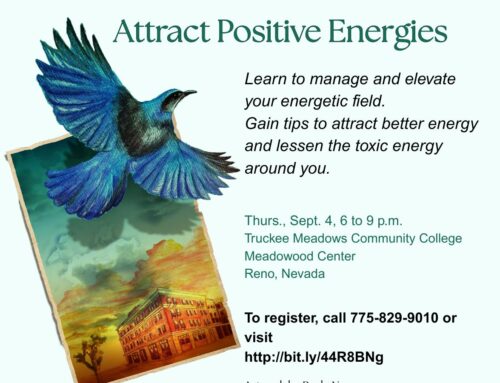University of Arizona Professor Gary Schwartz, PhD believes he has proven that death is not the end of our individual existences.
In his book, The Afterlife Experiments, he discusses his pivotal study of mediums and after-death communications. Schwartz, who earned his doctorate at Harvard and taught at Yale, headed UA’s former Human Energy Systems Laboratory, now part of the Laboratory for Advances in Consciousness and Health.
Authentic mediums do exist.
The mediums relayed accurate information up to 83 percent of the time compared to 36 percent for the control group. Schwartz noted one trial where Susan Northrup reported more than 120 pieces of information with an 80 percent accuracy rate.
In addition, the mediums repeatedly validated their peers by elaborating on details brought out in earlier readings, revealing a more complete picture of what the deceased person conveyed.
Schwartz said his findings showed “remarkable replication rates….guessing and chance cannot account for the accuracy of this data.”
Quantum physics inspired this study.
Schwartz mulled how the night sky shows us what used to be, not how it is. Scientists know the twinkling stars we see could have extinguished long ago. This led him to dwell on how energy continues well beyond the demise of its physical structure. He wondered if the same concept applied to human energy, or our souls.
This led him to study whether mediums could obtain accurate, unique and verifiable information from the dead.
Skeptics were key to the study’s design.
Keenly aware of the probability of mediumship fraud, Schwartz enlisted other skeptic scientists to serve on an advisory board. He also brainstormed with a psychic magician (who uses the art of illusion to discredit mediums) and a professional cold reader (who interprets body language and expressions and asks general leading questions to extract information from the sitter).
To keep UA’s data as pure as possible, mediums:
- Didn’t know the identity of sitters (the people being read by the mediums). Even if the mediums could find out, sitters were randomly assigned to see some mediums, but not all—rendering advance research useless.
- Were blind to the sitters; subjects sat behind them and a screen, so mediums couldn’t read expressions or body language.
- Were periodically instructed to perform silent readings (sitters remained quiet), thus eliminating any voice or verbal clues to what was said. During periods when sitters were allowed to respond, they were limited to yes or no answers.
- Occasionally provided remote readings of unknown subjects who were out of town. Later, mediums would meet these sitters over the phone so researchers could study how reading accuracy differed when direct contact over the phone or in person was not available.
High profile mediums agreed to be studied.
Schwartz recruited mediums (among them John Edward, Suzanne Northrup and George Anderson) to participate.
Psychic abilities and mediumship are different.
As some of the data conveyed by the mediums were unknown by the sitters (details were later verified by others who knew the departed), Schwartz surmised that the seers were not reading minds (psychic abilities) and could’ve only received the information from the crossed over souls.
The Afterlife Experiments is fascinating and a must read for believers and skeptics alike.






That’s interesting data, Kathy. Engaging to read.
Thanks, Tony, for taking the time to comment.
Certainly, and I’ll try to get to the UnNamed writer’s meeting. Looking forward to it.
Hope to see you there!